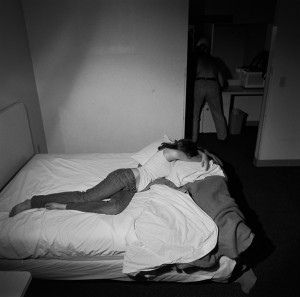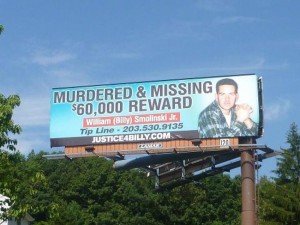On May 27, 2011, 26-year-old nursing student Michelle Hoang Thi Le went missing from Hayward, California, just hours before she was going to meet a friend for a weekend trip. Immediately, our family and her friends launched a national search campaign to find her. After 113 exhausting days of searching for her, our amazing volunteers found her on September 17, 2011. Though we didn’t find her alive, like we were vehemently hoping, we had our answer. We had no choice – that answer had to be enough. We laid her to rest and tried with our might to get back to living a different life without her.
It is hard to believe that a year ago today, we found Michelle, after 113 days of searching for her. It’s also hard to believe that the day has come to ensure there is justice for her murder.
The trial is beginning.
I am apprehensive and anxious. And I can’t sleep. The past three weeks have been nerve wracking, to say the least. Every night, my nightmares have revolved around murder, death or being chased by some impending crisis. I’d rather stay awake.
Since she went missing on Friday, May 27, 2011, life took a screeching halt and turned another direction, down a road that we were never prepared to travel. Our search center was our second home; our search teams became our second family.
All that most people see in the news is about her disappearance, the murder, her accused murderer and, now, the trial. But there was a life she had before May 27, 2011 – one full of dancing, playing, laughing, and loving with her friends and her family. Time is slipping by so fast, it seems, and it becomes a challenge to keep that story about the living, breathing Michelle we all know and love. I didn’t want her to become just a memory, a frozen face in pictures. I want to continue telling her story over and over again – about who she was, what food she liked, what she liked to do – everything just to remind myself and others that she existed here, with all of us, before her life was robbed from her.
Our family, her friends – everybody had their own special relationship with her before that day. I can only speak on my own behalf, but I know she spread her light to so many others.
To me, Michelle was a big sister. I looked up to her for as long as I can remember. I miss everything about her.
My favorite memories revolved around Michelle, Michael (her brother), and my brother – all of us within four years of each other in age. Growing up, we would all play “house”, which eventually progressed to video games, Pokémon, card games, board games. You name it, we played it. I remember it was like a kid’s dream come true when Michael and Michelle moved in with our family when she was 14, so the four of us cousins – we all grew up together in a zone that seemed like constant playtime.
We grew older into our teen years. I remember Michelle giving me boy advice in middle school, her tweezing my eyebrows for the first time at twelve, her helping me write my first “crush” letter, burning our sappy love song CDs. My mom even banned us from going into each other’s rooms past 10pm, because we’d be found early in the morning groggy and sleep-deprived from talking until dawn. I remember we even got our first jobs together and scheduled our shifts with each other so we would be able to lounge at La Jolla shores during the day and work at night. I remember choreographing stupid dances to hip hop songs.
We grew up in a huge family with many cousins, most of them boys, so she was my main confidante even into our 20’s. I remember talking about our future weddings and joking about what we would say when we made our maid of honor toasts. I remember talking about me moving back up to the Bay Area so we could hang out here together. I kept my word and I did – only 3 days too late, on May 30, 2011.
She seemed to live as though she knew the secret – that life was short and precious; that relationships mattered most and everything else was just stuff. Most people don’t reach that realization until much later, but Michelle – she always knew. Michelle was joyful, carefree, lighthearted, beautiful inside and out. She laughed easily, joked often, forgave liberally and gave constantly without expecting anything in return. She loved to shop. She was your BEST bargain shopper and had a seriously awesome, fabulous closet. She loved to dance and going out with her friends. She loved to eat, and then judge all restaurants on Yelp. She loved to read. She had 3 tattoos – a compass, a sparrow, and her mom’s signature on her left breast, over her heart. She hated heels and always opted for sandals or boots. She would loan her friends anything they needed or wanted – whether it be a car to get to a job interview or a scarf on a cold day. She gave and gave, and even took her passion for helping and put it toward a career in nursing.
She was in an accelerated nursing program and was only 6 months from graduating from Samuel Merritt University when she was killed. She was only 26 years old.
I remember so much more than words can ever write, than pictures can ever express. I want to capture all of the details in a box, with memories I can pluck out to re-live all the playtimes, shopping dates and conversations we had. But that’s not possible.
Since September 17th 2011, after we found her, we’ve seen grief settle in the veins of each of our lives, spreading its symptoms like a virus. Some of us have lost relationships and friendships after a change of that size and impact. Some of us have grown closer to others who were complete strangers before. Some of us continued to live her legacy because that’s the only way we knew how to cope with our loss – by keeping her name alive. Some of us pretended it never happened, imagining that she’s on vacation or on a very long leave. All of those who loved her – we were all challenged to press ‘reset’ to a new normal.
One of the most important steps of building her legacy and ensuring that her death was not in vain is to make sure her killer is not roaming the streets free with blood on their hands. And we have to take that step – now. Whether or not we want to face the tragedy again, it’s time to. For Michelle.
We cannot thank everyone enough, still, for bringing her home to us. We know that there are many families out there who have missing loved ones, and we were fortunate enough, at least, to be reunited with ours. Please stay with us while we begin the legal process to ensure justice in her name.
She was a granddaughter, a daughter, a sister, a niece, a cousin, a friend, a puppy mom and she is missed everyday.
I love you, Michelle.
We love you, Michelle.



































